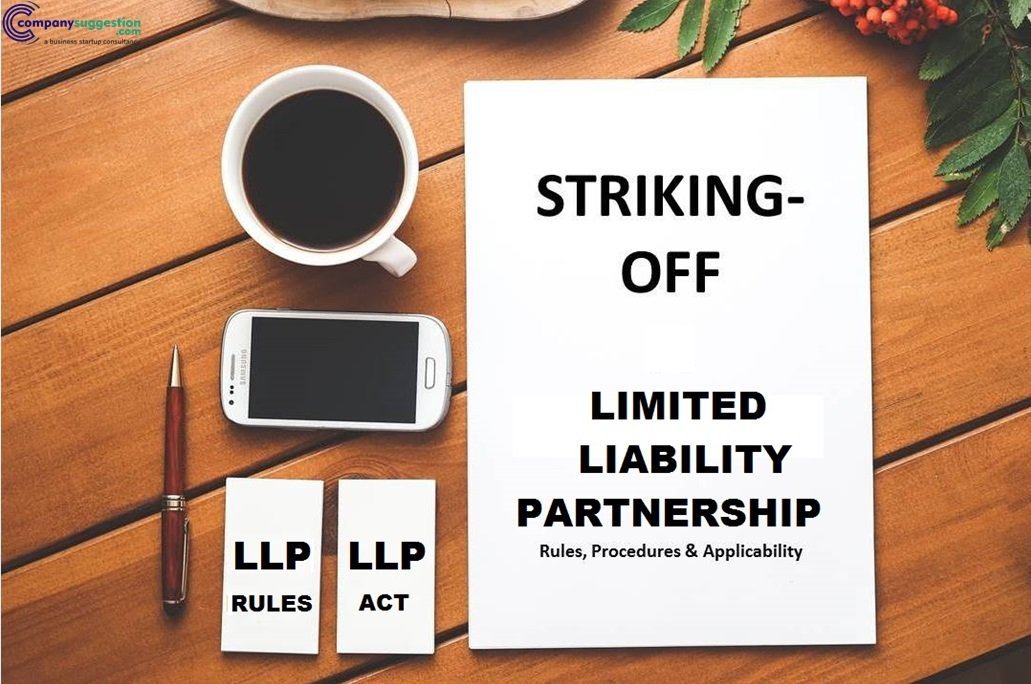What is an LLP?
LLP means an alternative corporate business form that it gives the benefits of limited liability of a company and the flexibility of a partnership. The LLP can continue its existence irrespective of changes in partners. It is capable of entering into contracts and holding property in its own name.
The LLP is a separate legal entity, is liable to the full extent of its assets but liability of the partners is limited to their agreed contribution in the LLP.
Further, no partner is liable on account of the independent or unauthorized actions of other partners, thus individual partners are shielded from joint liability created by another partner’s wrongful business decisions or misconduct.
Mutual rights and duties of the partners within a LLP are governed by an agreement between the partners or between the partners and the LLP as the case may be. The LLP, however, is not relieved of the liability for its other obligations as a separate entity. Since LLP contains elements of both ‘a corporate structure’ as well as ‘a partnership firm structure’ LLP is called a hybrid between a company and a partnership.
Rule 37 of the LLP Act, 2009 is produced below:
(1) Where a limited liability partnership is not carrying on any business or operation
(a) for a period of two years or more and the Registrar has reasonable cause to believe the same, for the purpose of taking suo motu action for striking off the name of the LLP; or
(b) for a period of one year or more and has made an application in Form 24 to the Registrar, with the consent of all partners of the limited liability partnership for striking off its name from the register,
the Registrar shall send a notice to the limited liability partnership and all its partners, of his intention to strike off the name of the limited liability partnership from the register and requesting them to send their representations along with copies of the relevant documents, if any, within a period of one month from the date of the notice:
(2) 3) At the expiry of the time mentioned in the notice, the Registrar may, unless cause to the contrary is shown by the limited liability partnership, or the Registrar is satisfied that the name should not be struck off from the register, strike its name off the register, and shall publish notice thereof in the Official Gazette, and on the publication in the Official Gazette of this notice, the limited liability partnership shall stand dissolved.
Ways of Striking off LLP
An LLP can strike off its business by adopting any of the following two ways:
- Declaring the LLP as Non-functioning
- Winding up of LLP
A) Declaring the LLP as Non-functioning:
In case the LLP wants to close down its business or where it is not carrying on any business operations for a period of one year or more, it can make an application to the Registrar for declaring the LLP as defunct and removing the name of the LLP from its register of LLP’s.
B) Winding up of LLP:
It is a process where all the assets of the business are disposed off to meet the liabilities of the same and surplus any, is distributed among the owners. The LLP Act 2008 provides for following two modes for winding up the LLP i.e.:
- Voluntary winding up
- Compulsory winding up
Voluntary Winding up: Under this, the partners may between themselves decide to stop and wound up the operations of the LLP.
Compulsory winding up: A limited liability partnership may be compulsorily wound up by the Tribunal—
- If the limited liability partnership decides that limited liability partnership be wound up by the Tribunal;
- If for a period of more than six months, the number of partners of the limited liability partnership is reduced below two;
- If the limited liability partnership is unable to pay its debts;
- If the limited liability partnership has acted against the interests of the sovereignty and integrity of India, the security of the State or public order;
- If the limited liability partnership has made a default in filing with the Registrar the Statement of Account and Solvency or annual return for any five consecutive financial years; or
- If the Tribunal is of the opinion that it is just and equitable that the limited liability partnership be wound up.
Process for Strike Off of LLP
A. Provisions for Removal of Name of LLP on application of the LLP:
In case the LLP wants to close down its business or where it is not carrying on any business operation for the period of one year or more, it can make an application to the Registrar of Companies for declaring the LLP as defunct and removing the name of the LLP from its register of LLP’s. The procedure is given below: (clause (b) of sub rule 1 of Rule 37 of LLP Rules 2008)
There are some steps for explaining the strike off of name of LLP
- STEP 1 – CALLING OF BOARD MEETING
- STEP 2 – SET OFF OF THE LIABILITIES
- STEP 3 – APPLICATION TO ROC BY LLP
STEP – I – CALLING OF BOARD MEETING:
LLP will call the Meeting of Partners/ Designated Partners to pass a resolution for the purpose of Strike off of LLP and to authorize any Designated Partner of the LLP to file application with Registrar of Companies.
STEP – II – SET OFF OF THE LIABILITIES:
After passing of resolution if there are any liabilities in the LLP, LLP will set off all the liabilities before next step.
STEP – III – APPLICATION TO ROC BY LLP:
An application is required to be made in e-Form 24 to the Registrar of Companies for Striking off the name of the LLP under Rule 37(1)(b) and 37(1A) of LLP Rules with following below mentioned documents:
Attachment to Form LLP-24:
a) Statement of Accounts certified by CA. Statement should not be older than 30 days from the date of application.
(i) The Statement of Account submitted with the application must give true and fair view of the financial position of the LLP.
(ii) The applicant LLP should have nil assets and liabilities at the time of filing application should submit Audited Financial Statement showing no assets and liabilities.
b) Copy of acknowledgement of latest Income tax return- Self Explanatory
c) Copy of the initial limited liability partnership agreement, if entered into and not filed, along with changes thereof
d) Bank Account Closure Certificate.
e) Copy of Resolution of LLP
f) Affidavit verifying no Creditors or Liability
g) Indemnity Bond
(i) The application in the Form as may be prescribed must be accompanied with an Indemnity Bond given by each designated partner of applicant LLP separately, duly notarized to the effect that should there be any liabilities on the LLP, such liabilities will be met in full by the designated partners of the applicant LLP even after the name of the LLP is struck off the register of the companies and will be liable jointly as well as severally.
(ii) Indemnity Bond is required to be given on the Non Judicial Stamp Paper of adequate value as applicable in the State where the Registered Office of the LLP is situated. Therefore, the text of the Indemnity Bond should be typed on the Non-Judicial Stamp Paper and then should be executed before the Public Notary
h) an affidavit signed by the designated partners, either jointly or severally, to the effect,—
(i) that the Limited Liability Partnership has not commenced business or where it commenced business, it ceased to carry on such business from ………….(dd/mm/yyyy);
(ii) that the limited liability partnership has no liabilities and indemnifying any liability that may arise even after striking off its name from the Register;
(iii) that the Limited Liability Partnership has not opened any Bank Account and where it had opened, the said bank account has since been closed together with certificate(s) or statement from the respective bank demonstrating closure of Bank Account;
(vi) that the Limited Liability Partnership has not filed any Income-tax return where it has not carried on any business since its incorporation, if applicable.
i) Copy of Detailed Application- Mention full details of LLP plus reasons for closure
j) Copy of Authority to Make the Application- Duly signed by all the Partners.
Notes:
- The date of cessation of commercial operation is the date from which the Limited Liability Partnership ceased to carry on its revenue generating business and the transactions such as receipt of money from debtors or payment of money to creditors, subsequent to such cessation will not form part of revenue generating business.
Whether Annual filling have to complete by the LLP before filling application for strike off:-
Statutory Provisions Contained Under the Act:
Provisions of Strike off of LLP are given in clause (b) of sub rule 1 of Rule 37 of LLP Rules 2008. As per rules, there is no provisions for exemption from the filing of e-form LLP- 8/ 11 for strike off of LLP. Therefore, every LLP have to complete annual filing before strike off of LLP.
However, by LLP Amendment Rules, 2017 situation has been changed. Extract of the Amendment Rules “The limited liability partnership referred to in clause (b) of sub-rule (1) of rule 37 shall, file overdue returns in Form 8 and Form 11 up to the end of the financial year in which the limited liability partnership ceased to carry on its business or commercial operations before filing of form for strike off”.
Interpretation Note:
LLP shall file overdue returns in Form 8 and Form 11 “up to the end of the financial year” in which LLP “ceased to carry on its business or commercial operation”.
Hence, considering the provisions of amendment rules one can opine that if a non operational LLP desires to strike off it must complete the filing of Form 8 and Form 11(Here after referred as “Annual Filing”)up to the end of the financial year in which the limited liability partnership ceased to carry on its business or commercial operations.
There are some example for better understand:-
EXAMPLE 1
If a LLP Incorporated on 10th April, 2011. It ceases / stops to carry on its business from 20th February, 2014 (F.Y. 2013-14).
Situations:
(i) LLP has completed filing of e-forms LLP – 8 / 11till 31.03.2018.
(ii) LLP has filed e-forms LLP – 8 / 11for end of financial year 31st March, 2014.
(iii) LLP has not filed e-forms LLP – 8 / 11since incorporation.
Situation Analysis:
(i) If LLP has completed Annual filing till the date of strike off, then no question arise in respect of completion of Annual Filing. LLP can go for strike off as per rule 37.
(ii) In this situation, LLP has filed annual filing form till the financial year ended 31.03.2013 (the last financial year in which LLP was operational). From 1st April, 2014 LLP has not done any business or not carried any business.
Therefore, as per amendment rule, 2017 LLP can file application for strike off of LLP with ROC without completion of annual filing forms since financial year 2014-15.
(iii) In this situation, LLP has not filed annual form since incorporation. However, if LLP wants to apply for strike off under rule 37 then as per amendment rules it has to complete annual filing till the financial year 2013-14. [Late fee annual filing form is INR 100 per day till the date of filing of form].
Whether Company have to filed Initial LLP Agreement and any amendment in LLP Agreement (E form LLP-3) with ROC before filling application for Strike off of LLP.
Statutory Provisions Contained Under the Act:
LLP rules don’t provide any exemption from the filing of LLP agreement in e-form LLP 3 with ROC. Therefore, before filing of application for strike off it has to file LLP Agreement with ROC.
However, by LLP Amendment Rules, 2017 situation has been changed. Extract of the Amendment Rules “LLP file e-form 24 enclosed with copy of the initial limited liability partnership agreement, if entered into and not filed, along with changes thereof in cases where the Limited Liability Partnership has not commenced business or commercial operations since its incorporation.”
Interpretation Note:
LLP shall enclose copy of initial LLP Agreement “if entered into and not filed” “along with any change in agreement” “in cases where the Limited Liability Partnership has not commenced business or commercial operations since its incorporation
Hence, considering the provisions of amendment rules one can opine that if a LLP is non-operational since incorporation, it can file application for strike off without filing of e form LLP-3 with ROC.
There are some example for better understand:-
Situations:
(i) If a LLP Incorporated on 1st April, 2010. It ceases / stops to carry on its business from 10th January, 2013 (F.Y. 2012-13). It has not filed LLP-3 with initial LLP Agreement. Whether it can apply for strike off without filing of LLP-3?
(ii) If a LLP Incorporated on 1st April, 2010 and has not commence business since incorporation. It has not filed LLP-3 with initial LLP Agreement. Whether it can apply for strike off?
(iii) If a LLP Incorporated on 1st April, 2010. It ceases / stops to carry on its business from 10th January, 2013 (F.Y. 2012-13). It has entered into amendment LLP agreement and not filed LLP-3 with such amendment Agreement. Whether it can apply for strike off without filing of LLP-3?
Situation Analysis:
(i) In this case the LLP has commenced business and forget to file the Initial LLP Agreement then as per amendment rule if the desires to apply for strike off its have to file LLP-3 with initial LLP Agreement.
(ii) In this case LLP has not commenced business or operation since incorporation and not filed initial LLP Agreement and any amendment in LLP Agreement.
Therefore, as per amendment rule, 2017 LLP can file application for strike off of LLP with ROC without completion of filing of forms LLP – 3.
(iii) In this Case LLP has commenced business, file the initial LLP Agreement with ROC but fails to file the amendment in the initial LLP Agreement. However, if LLP wants to apply for strike off under rule 37 then as per amendment rules it has to file Amendment in initial LLP Agreement in LLP-3 with ROC. [Late fee for filing form is INR 100 per day till the date of filing of form].













